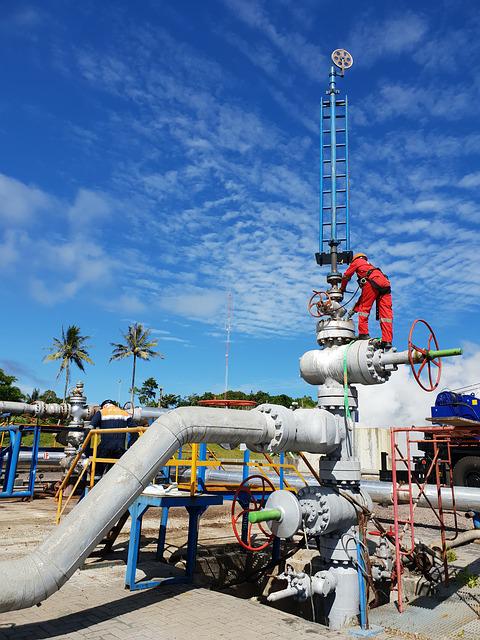What Is Geothermal Drilling
Contents
– Geothermal drilling: heat for three types of use
– How geothermal heating works
– Geothermal drilling: an advantageous solution
– Geothermal heating: a rather heavy implementation
– Geothermal drilling regulations
To heat your home, why not opt for geothermal heating by drawing on the heat in the ground, an inexhaustible source of energy? You will be guaranteed substantial savings with the use of renewable energy.
Geothermal heating uses a fluid circulating in horizontal or vertical networks installed on the ground. A thermal transfer occurs: the fluid heats up and brings the calories to the surface. To achieve this underground collection, drilling is necessary at depths that depend on the nature of the ground and the chosen technology, and a heat pump installation.
Attention: do not confuse geothermal heating with aerothermal heating, where the heat is drawn from the air, or with aqua thermal heating, where the heat is drawn from underground water.
Geothermal drilling: heat for three types of use
Did you know that the average temperature at ground level is between 10 and 14 °C, regardless of the season? Then, it increases by more than 3°C every 100 meters from a few tens of centimeters. Thus, a geothermal borehole can be exploited according to three production schemes:
– Heat production:
– With very low-temperature (below 30 °C) ground-to-ground geothermal energy, indirectly, with coupling to a heat pump:
▪ which requires an electrical connection and uses refrigerant;
◦ if the pump is reversible, the geothermal system provides an air conditioning function.
– With low-temperature ground/water geothermal energy (between 30 and 90 °C), directly, by a simple exchange in a geothermal loop:
▪ the water coming out of the ground gives up its calories to the water circulating in a heating network;
◦ the water is loaded with mineral salts and sulfides. It is forbidden to release it on the surface; this requires a production well, which escapes the hot water drawn from underground, and a re-injection well that releases the water after it has given up its calories.
◦ These two operations are feasible for an individual home.
– Electricity production with turbine coupled to an alternator:
◦ with high-temperature geothermal energy (above 150 °C);
◦ operation only in favorable areas (tectonic and volcanic regions).
Operation of geothermal heating

To set up geothermal heating, it is necessary to dig two wells:
– a collection well-called suction well: the heat pump sucks in water to absorb the calories;
– a discharge well, also known as restitution: the heat pump returns the cooled water to the groundwater.
Contact the regional directorate for the environment, development, and housing (DREAL) in your region or the prefecture of your department to obtain the required prior authorization.
Geothermal drilling: an advantageous solution
Geothermal heating is a system capable of collecting enough energy to heat a home, air-conditioning and producing domestic hot water (for example, to heat a swimming pool), and even producing electricity.
Low energy costs
– The ratio between the energy supplied and the total energy recovered is very economical for the user.
– There will be no price variation, as is the case with fossil fuels.
– Some regions offer incentives for the installation of such heating systems.
High thermal performance
COP from 4 (The COP, coefficient of performance, is the ratio between the heat produced and the work done).
No noise pollution
The heat pump is buried.
No dependence
This system does not depend on climatic conditions.
Practical
– Vertical geothermal energy requires little floor space.
– No storage of fossil energy.
Ecological
Non-fossil energy that does not require transportation.
Note: despite all these advantages, don’t forget to consider the cost of drilling, which is quite expensive: between $50 and $100 per linear meter, depending on the nature of the soil, etc.
Geothermal heating: a rather heavy implementation
The geothermal heating solution nevertheless presents a certain number of disadvantages that you must take the time to evaluate properly before launching your project:
– High cost for implementation requires work of varying importance depending on:
◦ the depth chosen (between 50 and 100 meters for low temperature geothermal);
◦ the type of horizontal (very low temperature geothermal) or vertical (low temperature geothermal) networks.
– Necessity of an exploitable land for the drilling:
◦ with prior study of the nature of the land and the sizing of the borehole;
◦ risk of land subsidence if the type of geothermal energy is not suitable.
– Due to the coupling with a heat pump:
◦ energy is not completely renewable since the heat pump needs electricity to operate;
◦ greenhouse gas emissions with the use of refrigerants.
Geothermal drilling regulations
A declaration to the town hall is sufficient for geothermal operations of minimal importance, defined by a depth of fewer than 100 m and a maximum heat output* of less than 20 thermies/hour. However, for geothermal operations of greater importance, the Mining Code applies.
* The heat flow rate is the product of the flow rate and the difference between the presumed wellhead temperature and the ambient temperature.
